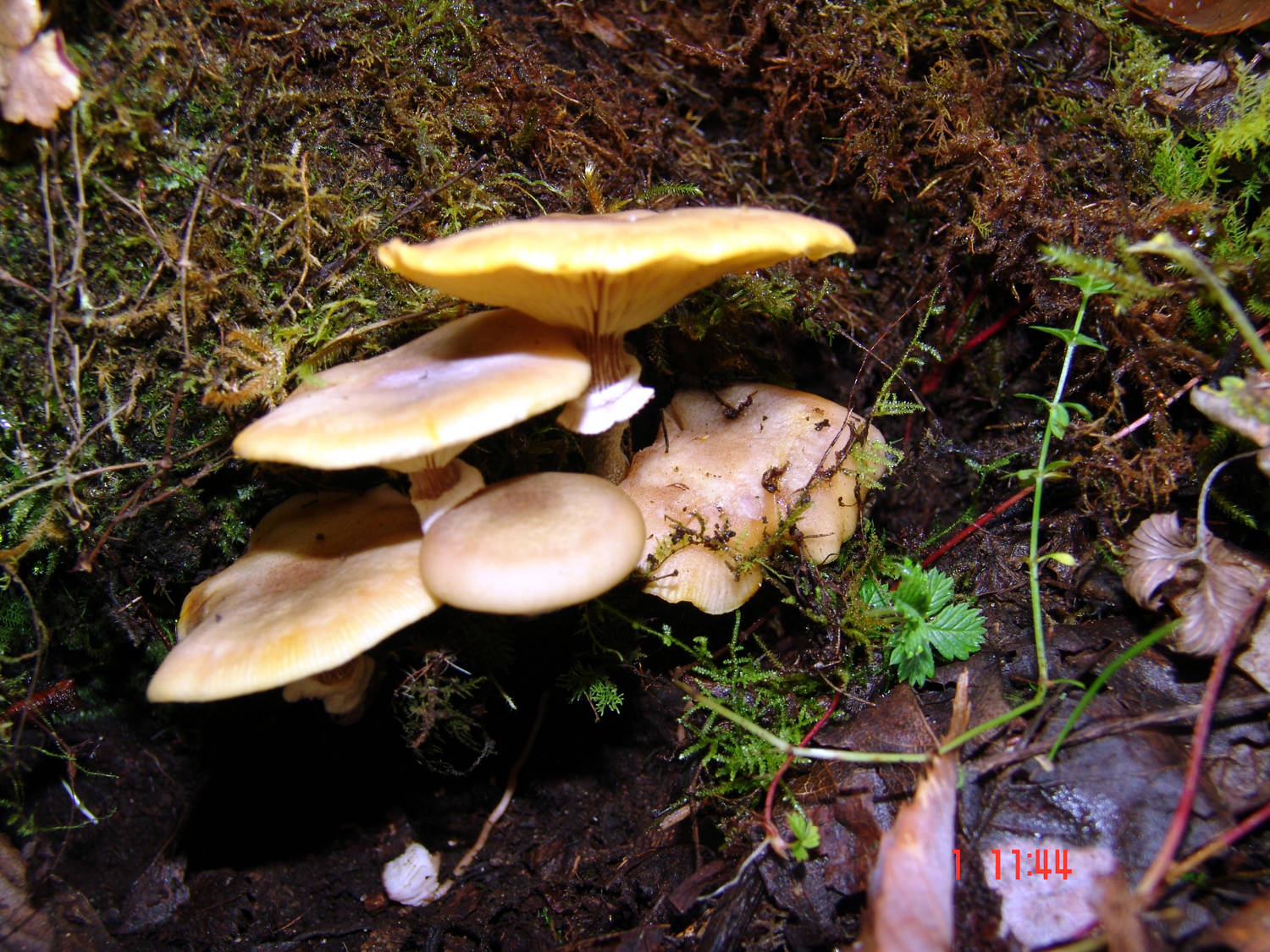
Local name: No local name known
Edibility: Edible
Habitat: On the ground, on decayed parts of wood, mostly at the base of the tree and gregarious to caespitose.
Description: Cap: 5-10 cm diameter, convex to flat, sometimes depressed or wavy, surface smooth, variable in colour, honey yellow, yellow ochre, tawny to dark brown often with a few dark scales near the centre. Hymenophore: Sub-decurrent gills, attached or slightly descending, close to nearly distant, whitish to yellow and then brownish with age. Stem: 5-15 cm long and 0.5-1 cm wide, tapering towards the base, surface tough and fibrous, yellow to reddish-brown at the base and pale near apex. Ring: Thick, whitish to yellow and cottony. Flesh: White. Spore Print: White to cream colour.
Comments: A. mellea is a very common species, edible when cooked, but is best eaten in small quantities because it has been reported to cause stomach problems. This species spreads by long black cords (rhizomorphs) in the soil and they can travel large distances to infect other trees. This is one of the most dangerous parasites of trees, causing diseases and ultimately death.


